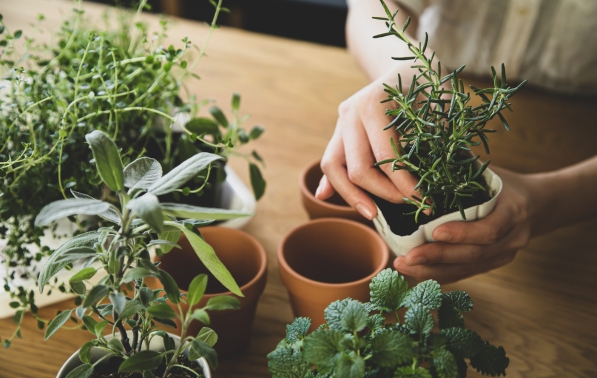Research Report: Eye Health
July 26, 2024 | 0 comments
by Wendy Wilson
According to German researchers, our overwhelming lives can bring about chemical cell changes within our bodies, including our eyes.
It was recently reported that new scientific research suggests that swelling is the beginning of eye health decline. Research from the Max Planck Institute of Molecular Cell Biology and Genetics in Dresden, Germany reports that our metabolic pathways and chemical reactions in cells can start eye or neurodegenerative health issues. Let’s check it out.
THE CAUSE
According to German researchers, our overwhelming lives can bring about chemical cell changes. Another concern is “nutrient stress.” According to the National Library of Medicine, nutrient strain can lead to cell oxygen deprivation. If the nutrient pathways are not restored protein modification is promoted. This is one of the ways eye cell mutation can develop.
EYE COLOR FACTOR
According to the German study, the eye pigment color may play a role in our eye health. They especially mention the brown pigment. The pigments can be sensitive to the pathways, amino acids, and other products flowing in the ocular body. The pathway regulates the metabolic function of the eye and a disruption can cause toxins to build up. Ocular toxins can also affect the brain. Our genes help to regulate the pathway of the eye.
TESTING THEORY
The German scientists tested their theory on the pathway of the eye using nutrition. They altered the diet of test subjects. Biochemical analysis looked at the effects and if any mutations occurred which found that diet affects the metabolites or metabolism of the eye, which can put the retina at risk. It was clear that the lack of nutrition impacted the retina and they could see the degeneration. The scientists called it “stress-induced retinal damage.” They also noticed that improving their diet reduced stress-related damage.
“This proved that retinal health in certain conditions can be improved by altering the metabolism of the eye with diet.” Max Planck Institute of Molecular Cell Biology and Genetics, March 2023
This also highlights oxidative strain on eye tissue by nutrient depletion. The researchers at the National Library of Science also noted that using “over-nutrition” or too much over-correction of nutrition can lead to cellular or metabolic strain of the eye. An example is synthetic medications or supplements, which can increase the risk of carcinogens. They cautioned about using “nutritionally-induced changes with high (mega) doses”.
FOODS FOR EYE HEALTH
Source: USDA National Nutrient Database for Standard Reference, Release 28.
Top 10 foods high in lutein and Zeaxanthin
- Dark leafy greens
- Salad greens
- Summer squash
- Broccoli
- Brussels sprouts
- Asparagus
- Green peas
- Leeks
- Green beans
- Orange Pepper – very high amounts of zeaxanthin
Foods with additional nutrition for eyes:
- Organic Pastured Egg Yolks
- Wild-caught Alaskan Salmon, sardines, anchovies (omega 3 fatty acids for retina)
- Black Currants – flavonoids support eyes on a DNA level
- Bilberry and blackberries – high amounts of anthocyanins, flavonoids
Greens High in Lutein and Zeaxanthin (per cup cooked):
Spinach (29811 mg), Turnip Greens (19541 mg), Sweet Potato Leaves (7327 mg), Swiss Chard (19276 mg ), Collard Greens (18527 mg), and Mustard Greens (14560 mg)
Additional foods:
- Spring Onions – 1 medium size 170 mg
- Fennel Bulb – one bulb of plant 1420 mg
- Okra – ½ cup 312 mg
- Celery – 1 stalk 113 mg
- Sweet Green Peppers – medium size 405 mg
- Sauerkraut – one cup 696 mg
- Japanese Persimmons – 1 fruit 1401 mg
- Red Cabbage (Raw) 1 cup 230 mg
- Balsam-Pear (Bitter Gourd) – 1 cup 158 mg
- Carrot – 1 carrot 316 mg
- Sweet Yellow Corn – 1 ear 933 mg
- Artichokes (Globe or French) – 1 artichokes 593 mg
- Tomatoes – medium size 151 mg
Herbs with Lutein and Zeaxanthin
- Basil fresh – 5650 mg, (5 leaves) 141 mg or ¼ cups 339 mg
- Basil (dried) – 1150 mg
- Cayenne – 13157 mg
- Paprika – 13157 mg
- Parsley (dried) - 5530 mg
- Coriander leaf – 5530 mg
- Marjoram (dried) – 862 mg
- Thyme (dried) – 862 mg
- Oregano (dried) – 862 mg
- Sage – 862 mg
- Poultry seasoning – 503 mg
- Cumin seed – 448 mg
- Mustard seed (yellow) – 448 mg
- Mustard (prepared, yellow) 75 mg
- Chili powder – 310 mg
- Black Pepper – 205 mg
- Caraway seed – 205 mg
- Pumpkin pie spices – 189 mg
- Horseradish – 10 mg
Additional herbs for eye health:
- Eyebright herb – soothes irritation, swelling, and infections
- Gingko Biloba - dilates vascular blood flow to the eye, helps lower eye pressure
- Goldenseal – soothes irritation and infections
- Milk Thistle – helps with weak eyes and blurry vision (eye health is connected to the liver and kidneys). The liver stores vitamins and glutathione, which are used to repair the eyes. Releases reductase to prevent sugar deposits in the eye.
- Grape Seed Extract- has flavonoids and antioxidants (linoleic acid, vitamin E, and oligomeric proanthocyanidins) to help with many eye health concerns
- Fennel – history shows the use of fennel for swelling, eye pressure, and lens health.
- Turmeric – eye swelling, reduces oxidation which is linked to dry eye.
It is suggested to limit sugar intake as it can cause swelling of the vascular pathways of the eye as well as tannic acid found in coffee, tea, wine, and beer.
Protecting our vision is an important proactive measure of health. Whole foods will provide balanced chemistry without second-guessing if you are overdoing it. With whole foods and herbs, the body takes the nutrition it needs and voids out what it doesn’t need. To find cold-pressed and organic tinctures of herbs that support eye health check out the Cataract Kit and Herbal Eyewash on www.thepowerherbs.com
"I'm using your Cataract Kit and Herbal Eyewash and I'm seeing much better. I'm amazed at how my vision has cleared up." Barbara Toone, Cleveland, OH *
*This statement has not been evaluated by the Food and Drug Administration. This product is not intended to diagnose, treat, cure, or prevent any disease. Seek medical advice from a licensed medical physician before using any product or therapy.*
Sources:
https://www.ncbi.nlm.nih.gov/pmc/articles/PMC3190402/
https://www.nal.usda.gov/sites/default/files/page-files/Lutein_zeaxanthin.pdf



